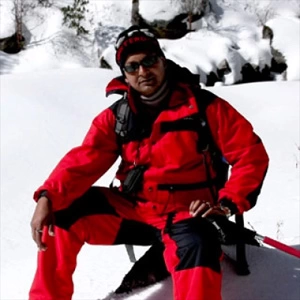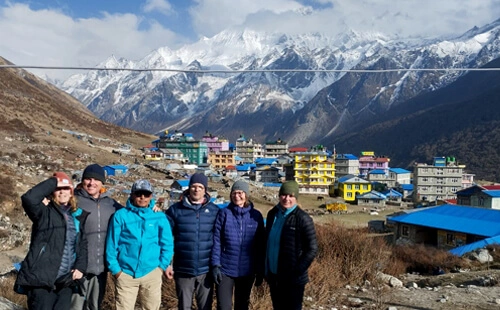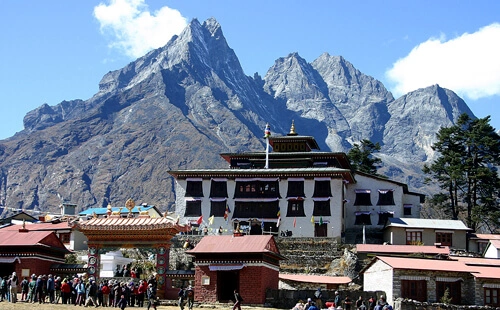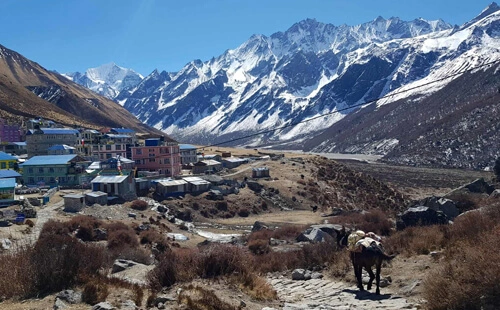Essential information for Nepal tourists on visas
Known as the world's roof, Nepal has more than eight 8,000+-meter-high mountain ranges, making it adventure-central for all types of wanderlust personalities, including trekkers, expeditors, and pilgrims. It caters to the interests of all sorts of adventure enthusiasts alike. The snow-capped Himalayan ranges, including the top of the world, Mt. Everest, also locally known as Sagarmatha in Nepal and Chomolungma (8,848 m) in Tibet, friendly Nepalese people, and culturally, historically, and religiously significant monuments welcome visitors from around the world warmly.
The spirit of Nepalese people seems to be always lively because every month of the year has something to celebrate. Since you have different attractions to enjoy in every resultant season, traveling to Nepal all year through endure! But, of course, before you grab your suitcase and start hiking to the Himalayan Kingdom, you must know the visa information. Here’s a breakdown of the essential Nepal tourist visa information for mountain climbing, trekking, and other adventure activities:
Visa on arrival: the easiest method
One of the best perks for tourists visiting Nepal is the on-arrival visa that many nationalities can obtain upon arrival at the Tribhuvan International Airport (TIA) in Kathmandu or other border regions such as Kakarvitta, Bhairahawa, Gaddachowki, Nepalgunj, and Birgunj on Nepal-India borders and the Nepal-China border in Kodari and Rasuwa.
This Nepal tourist-on-arrival visa process is quick and simple, but queues may occur during the peak trekking and climbing season of autumn and spring, and those with a visa from Nepalese diplomatic missions must enter Nepal within six months of the visa issue date.
Even if you are visiting Nepal for purposes other than tourism, a tourist visa is a must with re-entry facilities. Check your eligibility for an on-arrival tourist visa in Nepal at the Department of Immigration, which usually includes the following process:
- Fill out the arrival form at the airport with your details, the same as those in your passport, which must have at least six months of validity.
- Submit your passport, two passport-sized photographs, and proof of sufficient funds for your stay in Nepal.
- Pay the visa fee in cash, usually acceptable in Euro, Franc, Pound Sterling, US Dollar, Australian Dollar, Canadian Dollar, Japanese Yen, Hong Kong Dollar, Singapore Dollar, and other major currencies.
- Wait for a while, and your visa will be directly issued at the airport.
How to get Nepal Tourist Visas?
Other than visas on arrival at the terminal gate of the Tribhuvan International Airport (TIA) and entry points via land, Nepal’s Department of Immigration offers an online visa application system and visas from the Nepalese Embassy/Consulate so that travelers, visitors, trekkers, and climbers can obtain visas even before their arrival, which reduces their waiting time at the airport, especially during the peak tourist season.
To apply online
- Visit the official website of the Nepal Department of Immigration.
- Complete the form submission with your necessary personal details, passport information, and Nepal entry date.
- Make sure to provide your passport-sized photo.
- Once you submit the form, you will receive the confirmation receipt.
- Carry the print of the receipt to the visa counter on arrival.
Note: Generally, the online visa is valid for 15 days only; therefore, make sure you apply within two weeks of your journey to Nepal.
For a Nepal Tourist Visa from the Nepalese Embassy/Consulate
While nationals from most nations all across the globe are eligible for an on-arrival Nepalese visa, citizens from some countries might have to consulate with the Nepalese Embassy first. Nonetheless, for anyone looking forward to avoiding potential lines at the airport or border, a Nepal Tourist Visa from the Nepalese Embassy/Consulate is the best alternative that you can obtain by the following process:
- Visit the nearby Nepalese Embassy or consulate.
- Fill out a visa application form that is available at the embassy or consulate’s website.
- Submit the form with your passport with at least six months of validity, passport-sized photos, and visa fee in cash, or as per requirement.
- Collect your visa with the stamp in your passport before the beginning of your Himalayan trip to Nepal.
Nepal Tourist Visa Requirements
Though the specific requirements for a tourist visa to visit Nepal can vary based on the nationality of the visitors, generally you will need:
- You should have a passport that has at least six months of validity beyond your intended stay.
- Passport-sized photo for visa on arrival, embassy application, or online form. For visa on arrival, you can take photos at the Tribhuvan International Airport (TIA) or land borders as well.
- Completed visa application form at TIA, land border crossings, or online via the website of the Department of Immigration of Nepal.
- You may also be required to provide evidence of sufficient financial support to cover your expenses in Nepal.
- A return or onward ticket confirming your departure from Nepal is also often necessary.
- Visa fee payments can be made in hard currencies such as US dollars, euros, and other majors.
However, these are matters of change and can differ for tourists from various parts of the world; hence, it is always good to check with the Nepali embassy or consulate and concerned authorities in your country for the most up-to-date and accurate information.
Nepal Tourist Visa Fee
Usually, visa on arrival is what we consider the tourist visa for a Nepal visit and is priced as follows:
- USD 30 for 15 days
- USD 50 for 30 days, and
- USD 125 for 90 days.
If you wish to extend your stay in Nepal beyond your visa or plan to travel to a neighboring Himalayan country like Tibet or Bhutan and return to Nepal, you can easily extend your visa date or convert a single entry visa to a multiple entry visa at Immigration offices in Kathmandu or Pokhara for some additional amount, which is:
Extension Fees:
- USD 45 for 15 days
- USD 3 per day, and
- USD 5 per day for a late fee if overstayed without extending visa.
Multiple Entry Visa Fee:
Who doesn’t need a visa to visit Nepal?
While most nationalities need a tourist visa to enter Nepal, there are a few exceptions where the Department of Immigration may offer or issue a gratis visa (visa for free):
- Citizens from India, provide valid government-issued ID like a passport or voter ID card.
- Visitors from SAARC (South Asian Association for Regional Cooperation) nationals for 30 days where Afghan citizens may have to follow extra procedures.
- Children under 10 years from all over the world.
- Non-resident Nepalese (NRN) card holder (issued by MoFA/Nepalese diplomatic missions abroad), and
- Chinese nationals.
Conclusion
Obtaining a Nepal tourist visa is simple, user-friendly, flexible, and affordable. Whether you choose to apply on arrival, online, or through an embassy, the visa process to Nepal allows an immersive adventure, be it trekking to the famous Everest Base Camp, Annapurna Base Camp, Annapurna Circuit, unwinding around the ancient cities of Kathmandu, or a spiritually awakening, serene journey to the Lumbini.
With simple requirements for the visa process: passport, photo, and visa fee, getting a Nepal tourist visa is smooth and hassle-free designed to welcome tourists more efficiently, added much by the cultural richness, breathtaking landscapes, and genuine hospitality of Nepal and its timeless charm.




